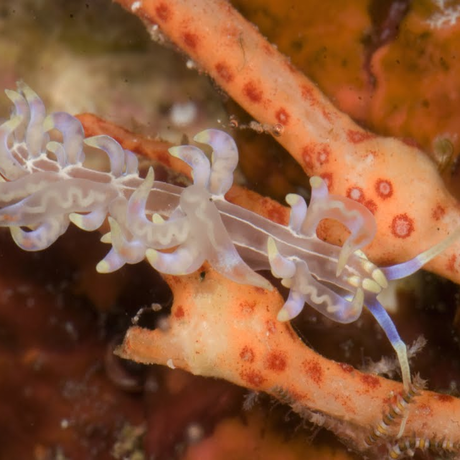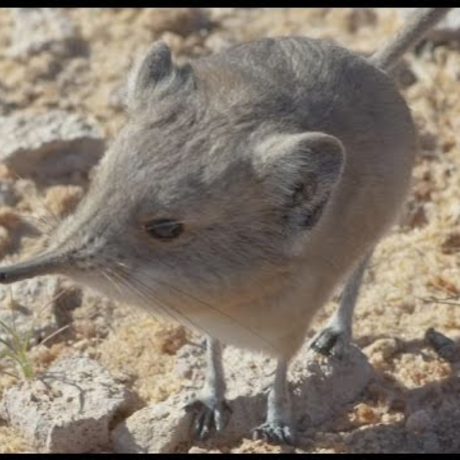Sengis can be found across most of the African continent. The round-eared Macroscelides genus is found in the southwest, and Macroscelides micus has been observed only near the Etendeka volcanic formation in northwestern Namibia. Sengis face the long-term threat of continued fragmentation of their forest habitats but are not thought to currently be at risk.
Our Work
Etendeka Round-Eared Sengi
Sengis or “elephant shrews” can be found throughout most of Africa, but until this year, the smallest known species had escaped detection for more than a century. The first hints of its existence didn’t emerge until 2006, when Academy Ornithology and Mammalogy scientists Jack Dumbacher and Galen Rathbun noticed a specimen in our collections that didn’t quite fit.
In contrast to its collections fellows, the sengi in question was unusually small, rust-colored, featured a hairless gland on the underside of its tail, and lacked dark skin pigment. Preliminary genetic analysis also yielded surprising differences. Suspecting they may have found a new species, Drs. Dumbacher and Rathbun joined with other colleagues from the Academy and Namibia and launched nine expeditions in that country between 2005 and 2011.
Armed with peanut butter, rolled oats, and Marmite (what else would you lace a sengi trap with?), the team collected a total of 16 specimens. Comparative analysis proved they’d indeed made a rare, new-mammal discovery—the recently described Macroscelides micus, or Etendeka round-eared sengi.
Range and conservation
Monogamy
Most sengi species live in monogamous pairs, defending their shared home territories by marking them with their scent glands. (They become especially antagonistic between members of the same sex.) Despite pairing off, sengi couples sleep in separate nests and rarely demonstrate social behaviors. Paired couples produce one to three babies several times a year.
Phylogeny
Despite a long, flexible snout resembling an elephant’s trunk and several “true shrew” characteristics—soft coat, scaly tail, and compact frame—the elephant shrew is neither. After much confusion about their evolutionary heritage, sengis are now classified as members of the mammalian group Afrotheria, which includes such diverse mammals as elephants, aardvarks, golden moles, and sea cows.
See one of our 2014 new-species discoveries, Macroscelides micus, next to a second sengi species in Tusher African Hall's Namib Desert diorama.
O&M collections include 135,000 bird and mammal specimens from more than 120 countries. Meet the researchers, explore projects and expeditions, and more.





